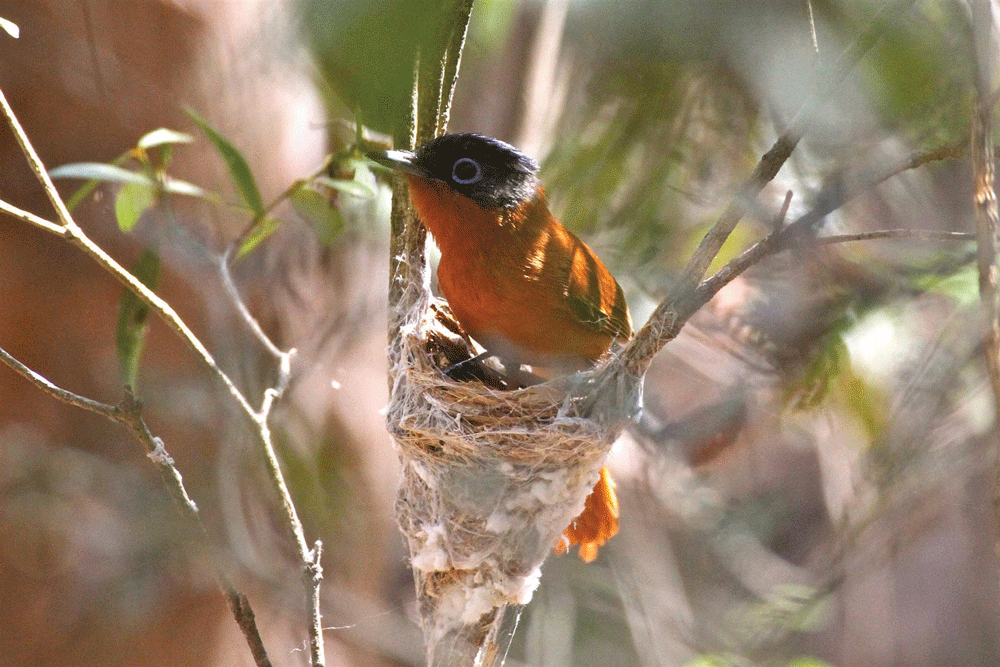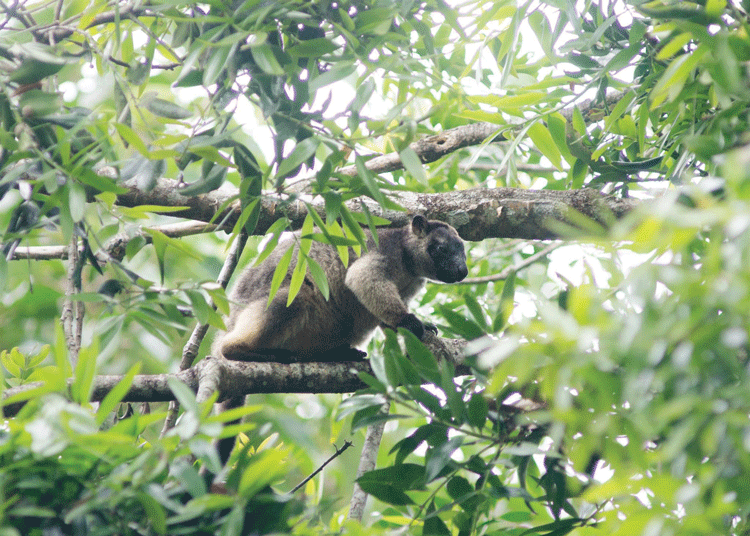The Rainforest Trust: A Local Base, A Worldwide Endeavor

By Beth Rasin
In a small classroom in remote Buckland, Alaska, home of hardly 400 people, students are studying the rainforest. Almost all of them are native Alaskans, many of whom have never seen a tree, but in this place that is dark and below freezing for months at a time, they are learning about the huge array of colorful plants, birds, animals and medicines found in the world’s rainforests. When they also discover the threats to this environment, they decide to do something, raising more than $1,000, which they send to Rainforest Trust. There, it is matched by donors and used to protect land at risk in northwest Colombia, more than 6,000 miles away.

Rainforest Trust CEO Paul Salaman called this 2010 project “an unprecedented Arctic-to-Andes collaboration.” While the work of Rainforest Trust, a 501c3 organization, often benefits indigenous people with its preservation of land, this unique partnership from one native culture to another would have lasting impacts for both, as rainforests slow global warming—a significant threat to the Arctic as well, and the effort benefits polar bears as much as tropical plants.
And so the reach of Fauquier County’s largest nonprofit extends to points around the globe, from Madagascar to Malaysia, from Brazil to Borneo. While their work is international, their headquarters sits in a quiet corner of the Airlie campus outside Warrenton, Virginia, in an historic building that was once the home of Dr. Murdock Head, who purchased the farm in 1956 with the goal of creating a conference center.

“We bring people from all over the country to work here,” says Salaman, who was born in Australia, educated in England, and has worked around the world. He’s credited, among much else, for discovering four new bird species. “The Piedmont Region is a wonderful place to live and work. We’ve got the Piedmont Environmental Council, the American Bird Conservancy and many other environmental organizations locally.”
Rainforest Trust receives no government funding, and they don’t lobby. “We’re focused on having a positive impact by land purchases,” Salaman says. “It’s like doing PEC easements but on an international level. We’re sort of PEC but working in the tropics.”
While preserving an acre of land in the Virginia Piedmont can cost more $10,000, the land Rainforest Trust sets aside averages around $2 an acre. “Kids can save $10 at a lemonade stand, and it goes a long way,” says Salaman.
While those preserved tropical acres can’t be seen from Virginia, that doesn’t mean they don’t make a difference to people in the Commonwealth. “Rainforests regulate the global climatic patterns, the air we breathe,” says Salaman. “The vast majority of biodiversity–90 percent—is in the tropical region of the world. And it’s a huge carbon dioxide sink, so it has a role to play in the global climate. Of all the carbon released in the world, 15 to 20 percent, which is larger than the world’s whole transportation sector, is from deforestations.”

Saving an acre of rainforest has the same impact as removing 25 cars a year in terms of reducing carbon output. “Saving an acre of rainforest is much more significant than driving a hybrid or electric car,” says Salaman. “That’s a step; we don’t want to discourage hybrid vehicles, but this is much more effective.”
And conservation efforts benefit local communities as well, often securing clean water and sources of food for people in the area. Rainforest Trust works with partner organizations and governments in each region to identify the best areas and approaches.
“We don’t just come in as outsiders; we work with local communities and partners and environmental NGOs,” says Alyssa Wiltse, media relations officer at Rainforest Trust. “We work in the local community and try to engage them and make sure they are on board. Protection projects are more sustainable when the local community buys in, so we’ve stepped up our community engagement in a lot of ways, especially in Latin America, where a lot of indigenous land rights are up for grabs. We help these communities with the nuances of filing paperwork to claim rights to their land.”
As they celebrate their 30th anniversary this year, Rainforest Trust is currently working in 45 countries, with 70 active projects. With 18 million acres already protected and another 19 million already in the pipeline, their goal is 50 million by 2020. Board members and grants cover most of the operating expenses, so 100 percent of donations go directly to conservation action. The organization receives the highest rating from Charity Navigator for running an efficient and
transparent operation.
Looking ahead, a new outreach program, the Women’s Conservation League, is in the process of forming locally. Their first initiative was an Earth Day Service project on April 21. Volunteers picked up trash on the highway, worked with Fauquier County Parks and Recreation on a park beautification project, and ran an electronics recycling drive.
Even when it’s not Earth Day, visitors are welcome to visit the Airlie offices. “We have a lot of information,” says Salaman. “If you show up, someone will greet you and show you around.”
While the Alaskan schoolchildren might not be able to hear the sounds of tropical birds and frogs, waterfalls and rain in the Amazon, they know the health of these regions impacts the air they breathe, the icecaps that surround them and the polar bears that live in the Arctic as well.
If you want to be involved in preserving rainforests or wish to learn about the Women’s Conservation League, visit rainforesttrust.org. ML


